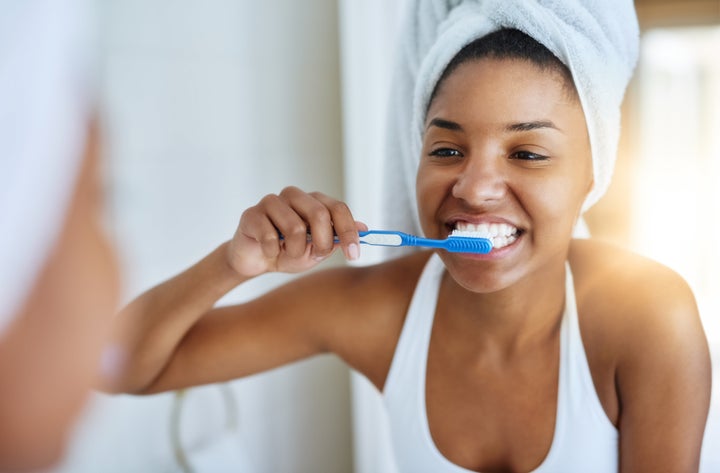
Putting on your best smile isn’t always easy. Between wine or coffee stains and that inevitable natural yellowing that happens, it’s hard to keep your teeth camera ready. We’ve partnered with SensodyneTrue White to bring you some facts you probably didn’t know about whitening your teeth, including whitening sensitive teeth. So, what are you waiting for? Start whitening and say cheese!
1. At-home whitening systems can cause tooth sensitivity
While the chance of irreversible tooth damage is rare, unsupervised at-home whitening kits with bleaching agents do have a risk of causing temporary discomfort and, on rare occasions, permanent tooth damage. According to the American Dental Association, many bleaching products on the market can cause temporary tooth sensitivity and lead to mild gum-tissue irritation. In other words, proceed with caution and make sure to consult with your dentist before using any such products.
2. There are whitening toothpastes out there geared specifically for people with sensitive teeth
Is tooth sensitivity preventing you from whitening? Lucky for you, there are whitening toothpastes out there geared specifically towards individuals living with sensitivity. So don’t worry, you don’t have to miss out. But do choose carefully, and keep in mind that harsh at-home whitening products with bleaching agents can etch or damage the enamel on your teeth, which can lead to sensitivity. We know how important mind and body wellness is — don’t forget to include your teeth. They need TLC, too.
3. A lifetime of stains can’t be removed overnight, but establishing a routine helps
While there’s no way to remove a lifetime of food and drink stains overnight, you can set yourself on the path toward whiter teeth by instituting a regular whitening routine. Start by brushing twice a day with a whitening toothpaste which has low abrasion. According to the ADA, these whitening toothpastes remove surface stains through gentle polishing and non-bleaching whitening actions.

4. What you eat after whitening is just as important as whitening itself
Too often people fall into the trap of whitening and then grabbing a glass of vino or red sauce-based food an hour later. According to the National Institutes of Health, after whitening your teeth using home-bleaching methods, it’s best to avoid drinks that cause tooth staining. In fact, certain beverages are among the most significant causes of primary coloration. Perhaps the most surprising part? This study showed that tea — along with cola and red wine — caused more staining than even coffee.
5. Teeth whitening doesn’t have to break the bank
We’ve all been there. You’re interested in revamping your smile, but one look at your account balance reminds you that fancy dental work is likely not in your immediate future. Have no fear. Gone are the days when only the wealthy could afford perfect smiles. You can now pop into any local drugstore and purchase an affordable whitening product to fit your exact needs, including low-abrasion whitening toothpastes geared for sensitive teeth, making whiter smiles more affordable than ever.
To those of us with sensitive teeth, whitening may seem out of the question. But with Sensodyne® True White®, sensitivity relief and whiter teeth go hand in hand. Sensodyne True White gently removes and helps prevent new stains from forming with twice daily brushing. So you don’t need to compromise sensitivity relief for whiter teeth.